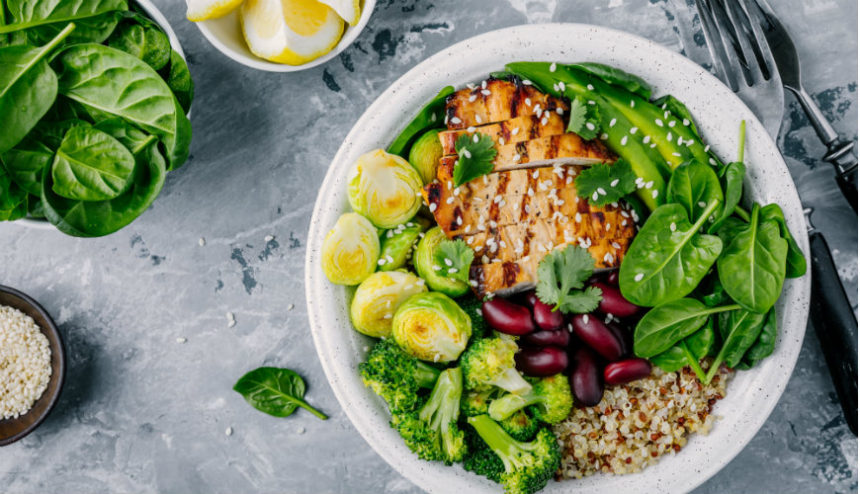September’s garden harvest – it’s easier this time of year to eat more of those fresh, delicious vegetables. September is also Fruits & Veggies – More Matters Month. Why celebrate something like this? Because 90% of us do not eat the recommended amount of fruits and vegetables we need on a daily basis, even though we know the health benefits from doing so. Why does it seem so difficult to eat foods we know are good for us?
How can you add more fruits and vegetables to your diet? Here are a few tips that might help.
- Fill half your plate with fruits and vegetables every time you eat. That includes snacks.
- Approach meals by thinking about the veggies first, then what grains and protein will go with it.
- Don’t hide fruit, keep it front and center on the counter or refrigerator.
- If you are currently eating zero fruits or vegetables, start by adding just one a day. Add blueberries to yogurt, add a vegetable to your dinner menu, add strawberries to cereal, add green beans to a casserole, etc. In a few days, add a second serving every day, then a third.
- When it comes to good nutrition, all forms of fruits and vegetables count – fresh, frozen, canned, and dried. Most frozen and canned foods are processed within hours of harvest so their flavor and nutritional value are preserved. They also make it quick and easy to add to recipes.
- You can drink your fruits and vegetables – to a point. Whole fruit is better, but the USDA considers 100% juice a serving. Be sure to watch for serving sizes or you will end up consuming extra calories from juice.
What do fruits and vegetables actually do for the body?
- Fiber – helps fill you up and keep your digestive system happy. In this instance, choose an orange vs. orange juice.
- Calories – fruits and vegetables are naturally low in calories and help people lose weight or maintain a healthy weight without feeling hungry.
- Reduction in disease risk – including heart disease, high blood pressure, and some cancers.
- Vitamins and minerals – are present and rich in most fruits and vegetables. They help you feel healthy and energized. Your body needs vitamins and minerals to run effectively and efficiently.
- Phytonutrients – scientists have identified thousands of them and they exist in plant foods (fruits, vegetables, beans, and grains). Phytonutrients is a broad name for a wide variety of compounds produced by plants. You may have heard of antioxidants, polyphenols, flavones, etc. as well as these specific nutrients beta-carotene, lycopene, and lutein. Studies show there are multiple effects and positive results each phytonutrient has on the body! Different foods grown on different plant sources provide different benefits, so eating a variety of foods every day is key.
Plus…
- Fruits and vegetables add color and texture to your plate, adding appeal to your meal.
- It’s nature’s way of providing quick, natural snack options. With just a little planning, it is easy to have bananas, apples, oranges, grapes, strawberries, and other foods on-hand for afternoon and after-school snacks.
- There’s always something new to try; fruits and vegetables are available in almost infinite variety.
- Fruits and vegetables are delicious and nutritious.
A variety of resources are available to provide additional information about the health benefits of fruits and vegetables. You can always ask your healthcare provider about specific foods they recommend for you. Every step you take toward eating more fruits and vegetables will help you and your family be and feel your best. Remember, more matters!


